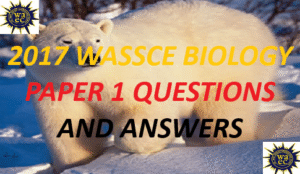Sample Essay Questions on Reproduction in Angiosperms (flowering plants).
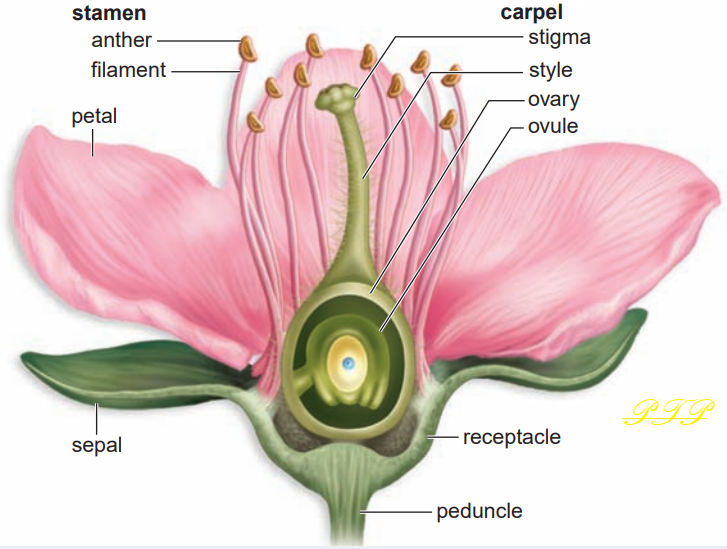
Sample Essay Questions on Reproduction in Angiosperms (flowering plants).
What are the two “alternating generations” of plants?
The two alternating generations of plants are;
- the sporophyte (spore-producing) and
- the gametophyte (gamete-producing) generations.
What specific part of a flower produces male gametophytes? Female gametophytes?
- Male gametophytes are produced in the anther of the stamen.
- The female gametophyte is produced in an ovule within the ovary of the carpel.
How do these two life phases differ in structure and function?
- Sporophytes produce spores that give rise to gametophytes.
- Gametophytes then may produce gametes; male gametophytes produce sperm, and female gametophytes produce eggs.
- In all seed plants the sporophyte is much larger and longer-lived than the gametophyte, and the gametophyte is protected within sporophyte tissues for all or part of its life.
- Gametophytes also are dependent upon the sporophyte for their nutrition.
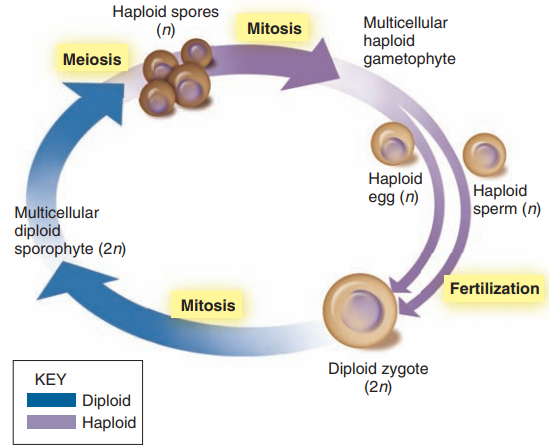
Explain how a mature male gametophyte is formed and state diploid and haploid structures.
Pollen grains are mature male gametophytes. They arise by the following steps:
- Spores that give rise to male gametophytes are produced in a flower bud’s anthers.
- Diploid microsporocytes inside an anther’s pollen sacs undergo meiosis
- Eventually each one produces four small haploid microspores.
- Microspores then divide by mitosis.
- One of the two resulting nuclei divides again by mitosis, yielding a three-celled immature gametophyte:
- two haploid sperm cells and
- a third cell that will control the development of a pollen tube after pollen lands on a receptive stigma.
- A mature male gametophyte consists of;
- the pollen tube and
- sperm cells.
Explain how the female gametophyte is formed.
Female gametophytes develop inside ovules in a flower’s carpels. They arise by the following steps:
- In an ovule, a diploid megasporocyte divides by meiosis, forming four haploid megaspores.
- Three of these megaspores disintegrate.
- The remaining megaspore undergoes three rounds of mitosis without cytokinesis.
- The result is a single large cell with eight nuclei arranged in two groups of four.
- One nucleus in each group migrates to the centre of the cell.
- After the cell undergoes cytokinesis, a cell wall forms around these two polar nuclei, forming a large “central cell.”
- A wall also forms around each of the remaining nuclei, and three of them, including an egg cell, cluster near the micropyle.
- The result is an embryo sac containing seven cells and eight nuclei. This sac is the mature female gametophyte.
What are the products of double fertilization in angiosperms?
- When the first sperm fertilizes the egg, a zygote is formed.
- When the second sperm joins with two other nuclei of the embryo sac, the endosperm formed.
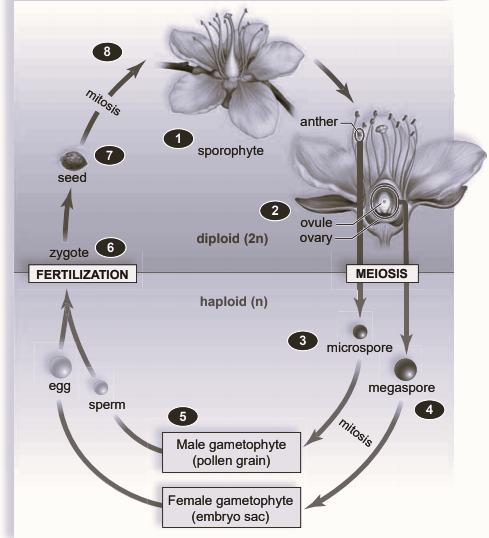
Explain the sequence of events in a flowering plant that begins with the formation of a pollen tube and culminates with the formation of a diploid zygote and the 3n cell that will give rise to endosperm in a seed.
- A pollen grain that lands on a compatible stigma absorbs moisture and germinates a pollen tube, which burrows through the stigma and style toward an ovule.
- Chemical cues from the two synergid cells help guide the pollen tube toward the egg.
- Before or during these events, the pollen grain’s haploid sperm-producing cell divides by mitosis, forming two haploid sperm.
- When the pollen tube reaches the ovule, it enters through the micropyle, and an opening forms in its tip.
- The two sperm are released into the cytoplasm of a disintegrating synergid.
- Next double fertilization occurs:
- Typically, one sperm nucleus fuses with the egg to form a diploid (2n) zygote.
- The other sperm nucleus fuses with the central cell, forming a cell with a triploid (3n) nucleus.
- Tissues derived from the 3n cell are called endosperm.
Early angiosperm embryos undergo a series of general changes as a seed matures. Summarize this sequence; then describe the structural differences that develop in the seeds of monocots and eudicots.
- As a seed matures, the embryo develops a root-shoot axis with a root apical meristem at one end and a shoot apical meristem at the other.
- Depending on the plant group, one or two cotyledons also develop.
- In monocots, a single large cotyledon develops and stores endosperm; protective tissues arise around the root and shoot apical meristems.
- In eudicots, two endosperm-storing cotyledons form.
- Near the micropyle, the radicle (embryonic root) attaches to the cotyledon at a region called the hypocotyl.
- Beyond the hypocotyl is the epicotyl, which has the shoot apical meristem at its tip and often bears a cluster of tiny foliage leaves, the plumule.
- At germination, when the root and shoot first elongate and emerge from the seed, the cotyledons are positioned at the first stem node with the epicotyl above them and the hypocotyl below them.
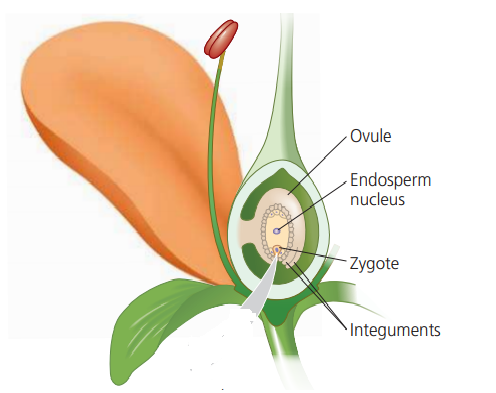
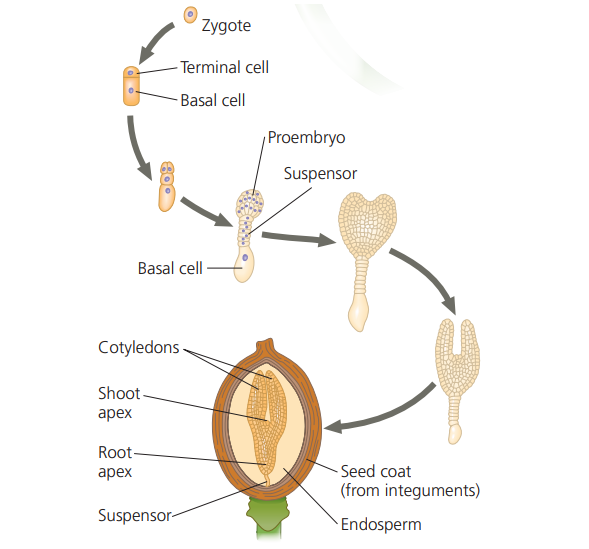
Germination begins when a seed imbibes water. Describe the key biochemical and developmental processes that bring an angiosperm’s life cycle full circle.
- Imbibition causes the seed coat to split, and water and oxygen move more easily into the seed.
- Metabolism begins as cells divide and elongate to produce the seedling.
- Enzymes that were synthesized before dormancy become active; other enzymes are produced as the genes encoding them begin to be expressed.
- The increased gene activity and enzyme production mobilize the seed’s food reserves in cotyledons or endosperm.
- Nutrients released by the enzymes sustain the developing seedling sporophyte until its root and shoot systems are established.
What is totipotency, and how does tissue culture exploit this property of plant cells?
- Totipotency is the capacity of fully differentiated cells to dedifferentiate, return to an unspecialized embryonic state, and then develop into a fully functional mature plant.
- Plant tissue culture procedures trigger the development of a mass of dedifferentiated cells called callus, some of which regain totipotency and develop into plantlets.
Identify the origin of each of the three parts of a seed.
- The embryo is derived from the zygote
- The stored food is derived from the endosperm
- The seed coat is derived from the ovule wall.
Why are both the seed coat and the embryo 2n?
- The ovule is a sporophyte structure produced by the female parent. Therefore, the wall (becomes seed coat) is 2n.
- The embryo inside the ovule is the product of fertilization and is, therefore, 2n.


What are cotyledons and what role do they play?
- Cotyledons are embryonic leaves that are present in seeds.
- Cotyledons store nutrients derived from the endosperm (in eudicots).
How does a dry fruit differ in structure and dispersal from a fleshy fruit?
- Dry fruits, have a dull, thin, and dry covering derived from the ovary and are more adapted to be wind-dispersed or self-explosive.
- Fleshy fruits, with a juicy covering derived from the ovary and possibly other parts of the flower, are more adapted to be dispersed by animals.
Contrast how a eudicot seedling and a monocot seedling protect the first true leaves.
- Eudicot seedlings have a hook shape, and monocot seedlings have a sheath to protect the first true leaves.
What are the possible benefits of asexual reproduction?
- Newly formed plant is often supported nutritionally by the parent plant until it is established
- The parent is ideally suited for the environment, and the offspring will be as well;
- If the distance between individuals makes cross-pollination unlikely, asexual reproduction is a good alternative.
- For plants that do not produce seeds, the only means of producing and increasing is vegetative propagation. Example hibiscus.
- There is early maturity.
- Newly developed plants require less attention and care once it is established.
How are new plants produced asexually in the laboratory?
- Tissue from leaves, meristem, and anthers can become whole plants in tissue culture.
Join Enlighten Knowledge WhatsApp platform.
Join Enlighten Knowledge Telegram platform.





